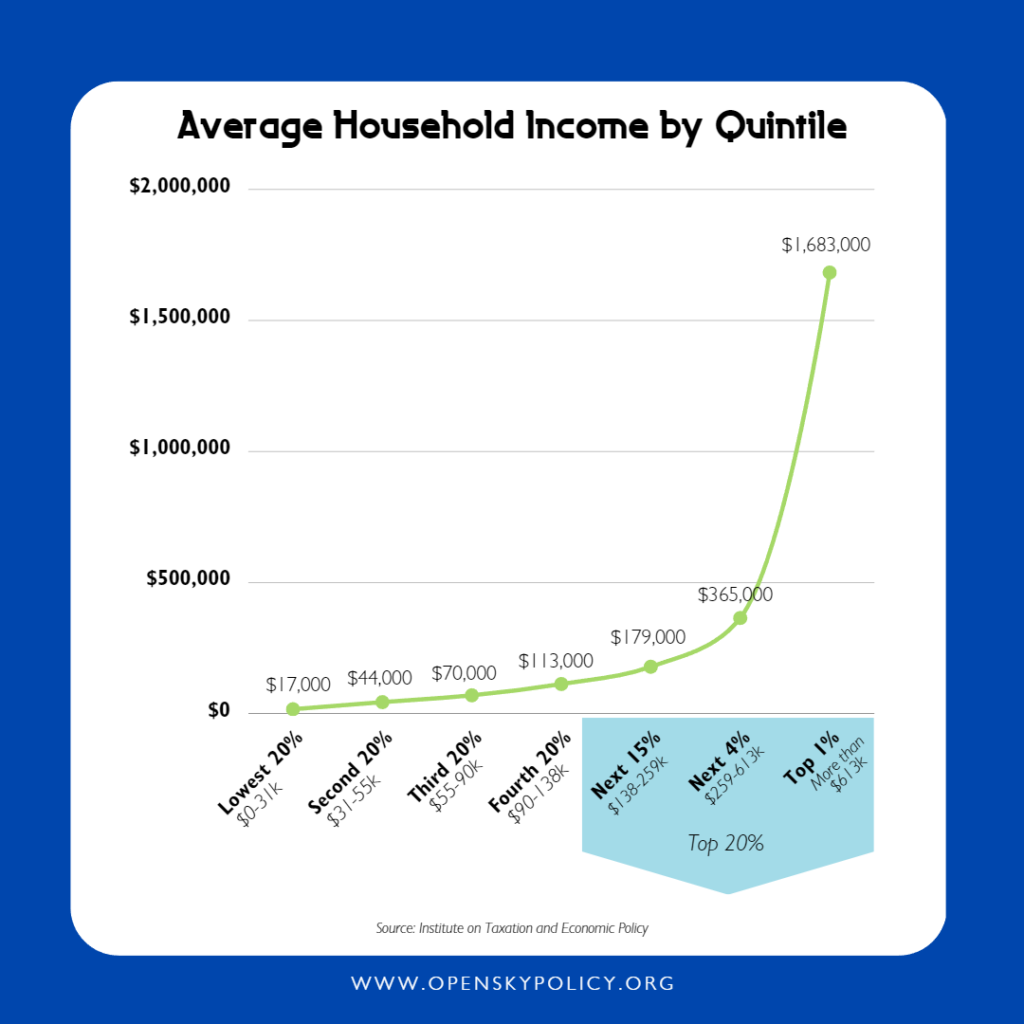The question of who is wealthy and who is not is a frequent one in the Nebraska Legislature and has the potential to affect any number of state policies. Is someone with a household income of $100,000 wealthy? What if they have significant student loan debt, a mortgage and two children in daycare?
The question of “who is wealthy,” however, isn’t all that useful because it tends to be subjective. People have been shown to compare themselves to people who make more than them, especially in an increasingly unequal society, where, as the chart below shows, incomes for the highest earners have outpaced other income groups. With a growing gap between high and low earners, when people are asked, they’re unlikely to “feel” wealthy or even comfortable financially.
Judgements on what counts as wealthy or poor can be very subjective, but we need objective ways to talk about income and make comparisons between different groups of people. Census data is helpful, as it can show the percentage of our state’s population whose earnings fall within certain ranges. Nebraska’s median household income is $66,644, which means half the state’s population makes less than that and half make more.
At OpenSky, we also find it useful to split Nebraska’s income distribution into quintiles. This means we line up incomes in the state, then group Nebraska’s population into 20% increments, from lowest to highest incomes.
As the chart below shows, the lowest-paid 20% of Nebraskans make between $0 to $31,000, with the average in the group being $17,000. The third quintile is the 20% of Nebraskans right in the middle of the income distribution, ranging from $55,000 to $90,000, with an average income of $70,000 for this group. Our hypothetical person making $100,000 would fall in the fourth quintile — putting them in the highest-earning 40% of Nebraskans — and be just under average for that range.
With the top-earning 20%, we pull it apart into the first 15%, the next 4% and the top 1% because there is a much larger range of incomes among the top-earners than in any of the other groups. The first 15% make between $138,000 and $259,000, with the average in that group being $179,000. The next 4% has a wider range, between $259,000 and $613,000. The top 1% of Nebraskans starts at $613,0000 and goes up. Average earnings in the top 1% of Nebraskans are $1.68 million.



